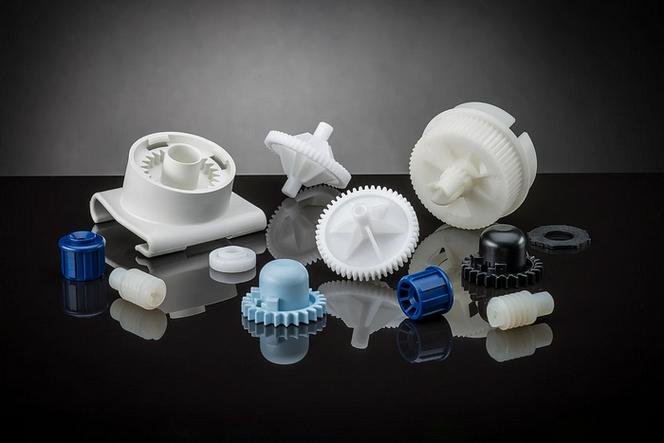
Injection Molding:
Injection molding processes significantly aid in the production of plastic products, effectively enhancing production efficiency, dimensional accuracy, and manufacturing standards.
Core Process Steps:
Melting Plastic Raw Materials: Plastic pellets are heated and melted within a raw material container, ensuring temperatures meet specifications to guarantee the melt’s flowability.
Injecting Molten Material: The molten plastic is propelled by a screw at injection speeds of hundreds of millimeters per second into the mold cavity. Operating pressures reach 2000-3000 bar, achieving filling precision down to the micron level.
Rapid Cooling and Solidification: Utilizing the mold’s cooling system (water-cooled/oil-cooled), the plastic’s temperature is rapidly reduced from 200°C to below 50°C. This cooling phase accounts for approximately 65% of the total production cycle time.
Demolding and Finishing: Tools eject the cooled, solidified plastic part from the mold, completing production (cycle time typically 30 seconds to 3 minutes).
Application Fields:
Automotive: Production of interior/exterior trim components (e.g., bumpers, dashboards, door handles) and structural parts (e.g., engine mounts, gears).
Consumer Electronics: Manufacturing precision components (e.g., smartphone frames, laptop casings, headphone housings).
Medical Devices: Production of disposable items like syringes, infusion sets, and surgical instrument handles, as well as high-precision implants such as artificial joints and dental implants.
Packaging Industry: Manufacturing packaging materials including bottle caps, food containers, and cosmetic bottles.
